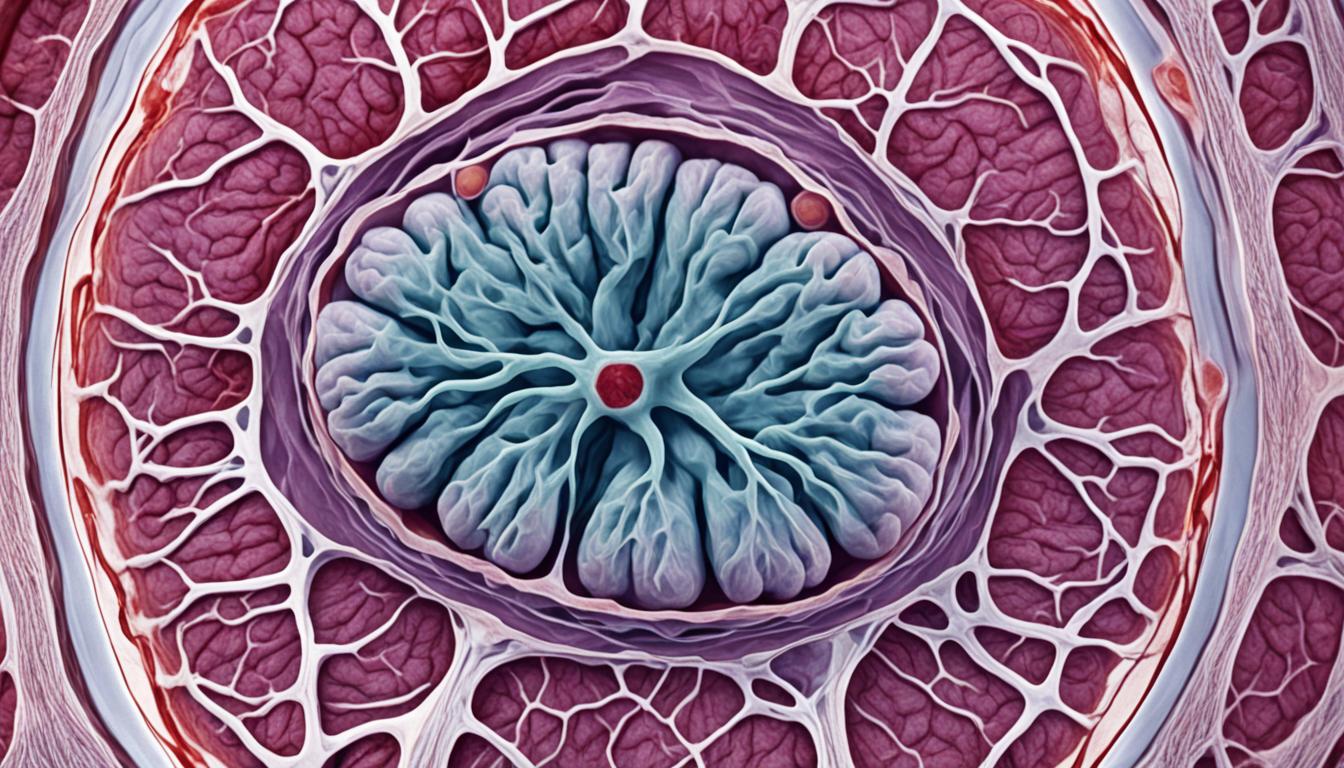Retractile testicles mean the testes pull back into the body in certain cases. This could happen when it’s cold, during a check-up, or when you’re active. They usually come back down into the scrotum on their own, especially if you’re warm and relaxed. It is advised to keep a close eye on the situation until puberty, as there’s a small chance they could stay up. Stem cell therapy is under research as a treatment for this condition.
Key Takeaways:
- Retractile testicles can retract out of the scrotum in certain situations but can return when relaxed or warm.
- Close monitoring of retractile testes until puberty is important due to the risk of developing an undescended testicle.
- Stem cell therapy is being researched as a potential treatment option for retractile testicle disease.
Undescended Testicle – Prevalence, Risk Factors, and Diagnosis
An undescended testicle happens when one or both testes don’t move into the scrotum. It’s quite common, affecting 1-6% of boys. For premature babies, the number goes up a lot, to about 30%. So, it’s really important to know about this condition.
This birth issue can be linked to genes, the mother’s health, and the world around us. Things like hormonal changes and issues with how the testes move can lead to undescended testicles. Knowing these risk elements helps in spotting and treating it early.
Doctors typically find undescended testicles through a check-up. They feel where the testes are. If they can feel them, that’s a big step in knowing what’s wrong and planning the best treatment.
Prevalence of Undescended Testicle
The number of cases can vary. We’re sure that premature babies are at higher risk. Here’s a look at how much more likely they are to have this issue:
| Population | Prevalence of Undescended Testicle |
|---|---|
| Full-term infants | 1-6% |
| Premature infants | Up to 30% |
This chart shows that premature babies are indeed at greater risk. This is why checking early and keeping an eye on them is crucial.
Risk Factors for Undescended Testicle
Several things can make undescended testicles more likely. These include:
- Genetic predisposition
- Premature birth
- Hormonal imbalances
- Maternal smoking during pregnancy
- Environmental factors
Knowing these risks helps doctors target care better.
Diagnosis of Undescended Testicle
Doctors mainly check for undescended testicles by feeling around. This hands-on exam is key. In most cases, extra tests like ultrasound aren’t needed.
Spotting undescended testicles early and understanding their spread and risks is crucial for early help.
Treatment Options for Undescended Testicle
Undescended testicles need careful management, considering how old the patient is and where the testicle is. The treatment options are hormone therapy and surgery.
Hormone Therapy
Hormone therapy uses human chorionic gonadotrophin (hCG) or gonadotrophin-releasing hormone (GnRH) to push the testicle down into the scrotum. But, it doesn’t work for everyone. Its success is not guaranteed.
Not every patient is fit for hormone therapy. Doctors decide based on age, how severe the problem is, and if there are other health issues.
Surgical Treatment
The common way to treat undescended testicles is through surgery called orchidopexy. It places the testicle into the scrotum and holds it there. This surgery should be done between 6 to 18 months old. It helps boys’ future fertility and lessens the cancer risk.
In surgery, a cut is made in the groin or scrotum. The doctor finds the testicle and moves it to the right spot. The cut is then closed, and usually, the child can go home that day.
Comparison of Hormone Therapy and Surgical Treatment for Undescended Testicle
| Treatment Option | Advantages | Disadvantages |
|---|---|---|
| Hormone Therapy |
|
|
| Surgical Treatment |
|
|
Table: A comparison of hormone therapy and surgical treatment for undescended testicle. It shows the good and bad of each choice.
Conclusion
Retractile testicle disease and undescended testicle issues need careful watching and proper care. While retractile testes might not demand treatment, checking regularly is key to detect changes or problems early. It’s vital for those with these conditions to team up with their doctors. Together, they can choose the best steps to take.
For an undescended testicle, surgery or hormonal therapy might be needed to place it correctly. The common surgery is orchidopexy, which secures the testicle. Hormone treatments like using hCG or GnRH aim to move the testicle, yet how well they work is not guaranteed.
The main aim in handling these conditions is to keep the testicles healthy, boost chances of having children, and lower cancer risks. New studies, like using stem cells, show promise for the future treatment. Staying in touch with healthcare providers and attending regular check-ups is vital to get the most fitting care.

